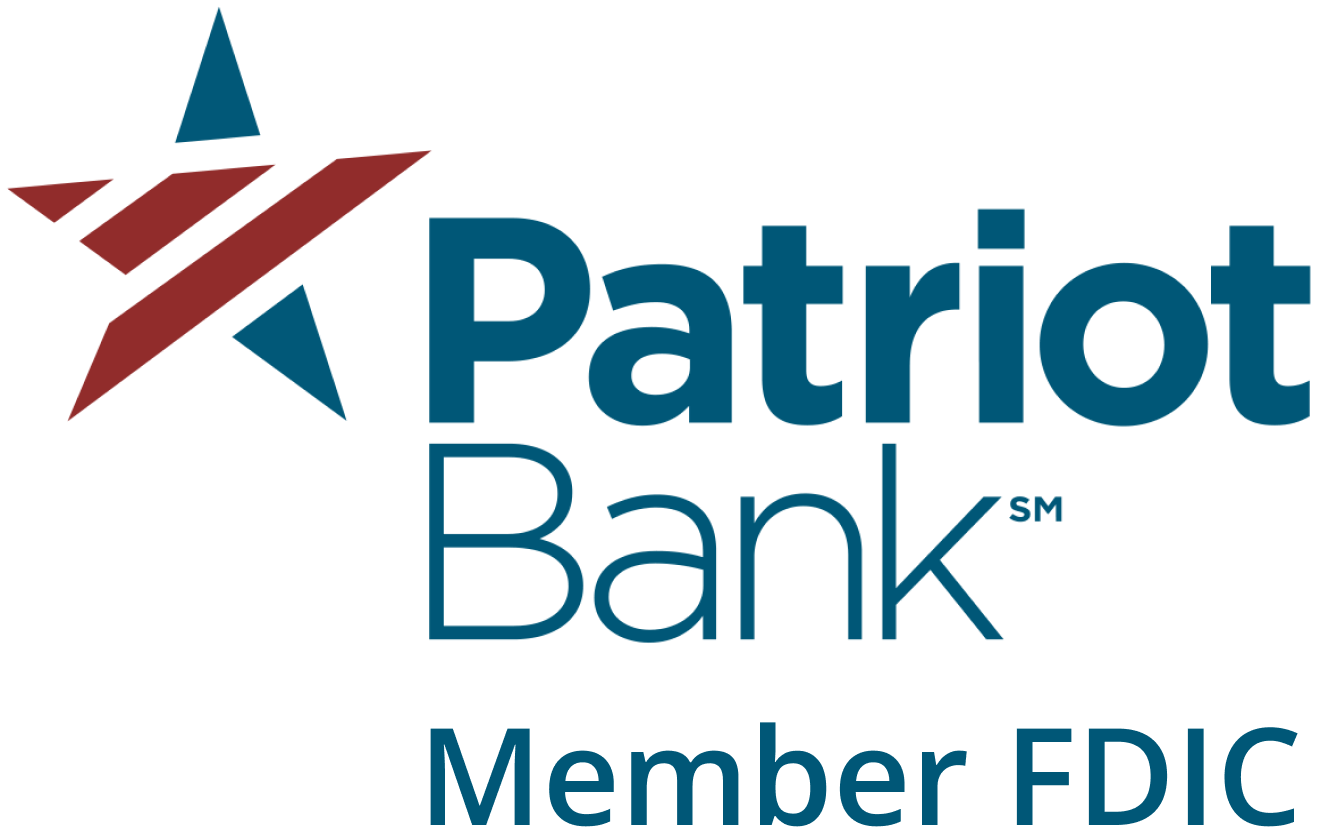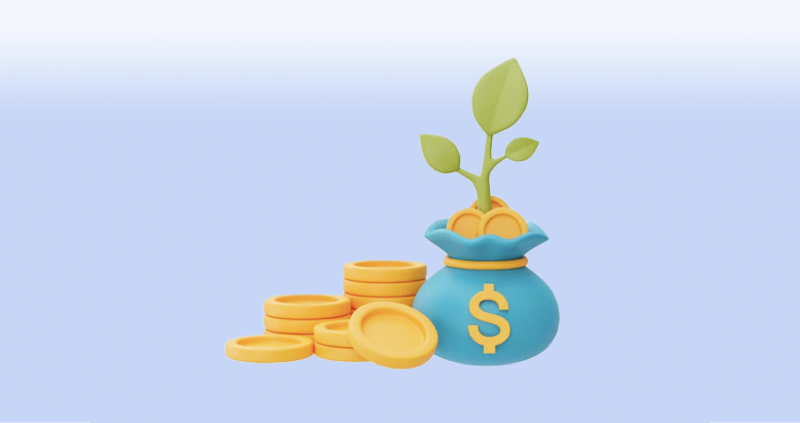What is the best way to invest $5K? Smart strategies for all financial goals
Whether you’re looking to grow your savings, pay off debt, or build long-term wealth, here’s how to make the most of an extra $5,000 based on your goals and risk tolerance.
Consider your financial goals and risk tolerance: Short-term needs like emergency savings or debt payoff may require safer options, while long-term goals give you more room for growth investments like ETFs or retirement accounts.
High-yield savings products for short-term goals: High-yield savings products and CDs offer safer, predictable returns for short-term savings, while investment vehicles like stocks, index funds, and REITs offer greater growth potential with a higher risk.
How to invest $5K right now: There’s no one-size-fits-all answer. You can diversify your $5K across multiple strategies for balanced financial growth based on your needs.
Determine your goals and risk tolerance
If you have an extra $5,000 on your hands, you might think of it as bonus play money, potentially leading you to miss out on opportunities to get ahead financially. Before using this extra money right away, you might want to take a closer look at your current situation to help determine how to use it in your best interest.
Taking your current financial situation and goals into account, along with your risk tolerance, can help you determine the smartest way to invest $5K depending on your individual needs. Here are some options to help you decide and make the most of your $5,000 based on different time horizons and goals.
Best ways to invest $5K to meet your short-term goals
The best way to invest $5,000 will ultimately depend on what is in alignment with your goals and risk tolerance. While there is no single “best” way, one of these methods may be more suitable to help you get closer to your goals.
Here are some ways to get started on reaching your short-term goals.
Pay off debt
While $5,000 may not be enough to pay off larger debts like a car or student loans, it can help you tackle smaller outstanding debts. If you have balances on your credit cards with high interest rates, you may want to consider using your $5,000 to pay this off. Credit cards often accrue interest daily if left unpaid, which can lead to larger debt if you don’t pay it off promptly. If you have debt across multiple credit cards, you may want to consider paying off the one with the highest interest rate first.
Fund your emergency savings
Having an emergency fund is crucial to help you meet unexpected expenses without derailing your financial situation. Now would be a good time to start an emergency fund if you haven’t already.
Emergencies are unpredictable, so it is better to stay prepared by setting aside some extra cash. It is often suggested for your emergency fund to cover at least three to six months worth of living expenses, but your actual savings amount may vary based on your income and expenses.
You can set aside some, or all, of your $5,000 to help you get started or further boost your emergency fund. You might consider putting this money in an easily accessible account, such as a high-yield savings account or money market account, to be able to access your money promptly when needed. These accounts are both highly liquid and also help further grow your emergency fund, as they tend to offer higher interest rates than a traditional savings account.
The Raisin marketplace offers access to high-yield savings and money market accounts with competitive interest rates to help you maximize your emergency fund. Explore interest rates and start growing your emergency savings today.
$
Bank
Product
APY
New Raisin Users: 60-Day Rate Lock

mph.bank, a division of Liberty Savings Bank, F.S.B., Member FDIC
High-Yield Savings Account
4.01%
$2,005.00
Raisin is not an FDIC-insured bank or NCUA-insured credit union and does not hold any customer funds. FDIC deposit insurance covers the failure of an insured bank and NCUA deposit insurance coverage covers the failure of an insured credit union.
Start a certificate of deposit (CD)
If you have other short-term savings goals with a defined time horizon, you may want to consider investing a portion, or all, of your $5K into a CD. Certificates of deposit are a type of deposit account that lets you lock in interest rates for a predetermined term, such as three months to five or more years. However, the catch is, you will owe a penalty if you withdraw your funds early. If you want more flexibility, you can also opt for a no-penalty CD, in which you won’t be penalized for withdrawing funds before the CD matures, but interest rates might not be as high as traditional CDs.
While this may not be an ideal option for emergency savings due to withdrawal penalties, you can still use CDs to grow your savings. CDs typically offer higher interest rates than traditional savings accounts, and sometimes also high-yield savings or money market accounts. Strategies like CD laddering (opening multiple CDs with different maturity dates) can help further grow your $5,000.
Raisin offers access to competitive interest rates on CDs and no-penalty CDs, with only a $1 deposit minimum. Compare accounts and start multiplying your $5K today.
$
Bank
Product
APY
Maturity
Raisin is not an FDIC-insured bank or NCUA-insured credit union and does not hold any customer funds. FDIC deposit insurance covers the failure of an insured bank and NCUA deposit insurance coverage covers the failure of an insured credit union.
What can I invest $5K into for longer-term goals?
If you’re on top of your short-term savings goals and debt, you may also want to consider what would be the best way to invest $5,000 to help you meet your long-term financial goals. In this case, you will still want to consider your current situation, risk tolerance, and goals, but also focus on your investment horizon.
If you are looking to use your $5K to diversify your portfolio, get started with investing, or focus on growing your retirement funds, here are some options to consider.
Exchange-traded funds (ETFs)
An exchange-traded fund, also known as an ETF, is a basket of securities made up of assets such as bonds or stocks, which allows you to invest in multiple financial instruments at the same time. ETFs track the performance of a specific commodity, index, bond, or other asset, and are bought or sold on a stock exchange. They offer a lower-cost investment option than traditional stock trading, while also giving you the ability to trade shares during the trading day.
ETFs provide a flexible approach for beginner investors while also providing portfolio diversification. You will need to have a brokerage account or may even want to consider a robo-advisor to get started investing in ETFs. While this can be an option to potentially grow your $5K, it is also important to be aware of potential losses you may face when choosing this investment option.
Index funds
Index funds are a type of pooled investment fund, often a mutual fund or ETF, designed to mirror the performance of a specific financial market index.
This can be a popular choice for new investors, as it offers diversification from the start, lowering the risk of potential losses, and also because of the lower fees and expenses due to less demanding portfolio management.
Index funds, such as the S&P 500, tend to follow a passive, rather than active, investing approach, aiming to maximize returns over the long run. This can also be an easier approach for beginner investors and one way to invest your $5,000 for long-term growth. However, it is again crucial to consider your risk tolerance, as you may face potential losses with this investment option.
Real estate investment trusts (REITs)
Your $5,000 might not be enough for a rental property, but you can still potentially benefit from real estate cash flow thanks to real estate investment trusts, or REITs. REITs are companies that own, operate, or finance income-producing real estate and allow investors to participate in the gains (and potential losses) of these real estate assets. So if you want to explore investing in real estate, this could be one way to get started. You might want to do some extra research to be aware of potential losses you can face.
Stocks and bonds
Stocks and bonds may be some of the first things that come to mind when it comes to investing. Stocks give you partial ownership, or a share, in a company, while bonds are essentially loans you provide to a government, corporation, or agency, which are paid back to you with interest. While stocks are known to be riskier than bonds and other investment options, they offer the potential for significant gains in the long run. However, due to their volatility, you can also face major losses.
If you choose to invest your $5K into stocks, you may want to do your research on the company you wish to invest in or consider diversifying your portfolio with bonds or other options such as ETFs or REITs.
Contribute to an IRA
You might also want to consider using your extra $5K to fund your retirement savings by contributing it to an IRA or Roth IRA. The annual contribution limit for both account types remains $7,000 in 2025 (or $8,000 if you are 50 or older),1 so you would be just shy of reaching the limit. If you don't have an IRA yet, now could be a good opportunity to open one, as you don’t need an employer to have one.
Reward yourself
If you have your financial foundation in check, a stable emergency fund, and are on top of your savings and debt repayment, you can also think about using some of your extra cash to reward yourself with something fun. Celebrating your wins with smarter incentives, such as a short weekend away, a nice dinner, or that new phone you’ve been wanting to upgrade to, can help reinforce your good spending habits and motivate you to keep making wise decisions to reach your savings goals over time.
Grow your $5K with Raisin
If you’re still unsure how to invest your $5K right now, Raisin is here to help. The Raisin marketplace gives you access to a variety of high-yield savings products with competitive interest rates to help grow your $5K with minimal effort and risk. Compare account types and start maximizing your savings potential today!
The above article is intended to provide generalized financial information designed to educate a broad segment of the public; it does not give personalized tax, investment, legal, or other business and professional advice. Before taking any action, you should always seek the assistance of a professional who knows your particular situation for advice on taxes, your investments, the law, or any other business and professional matters that affect you and/or your business.









